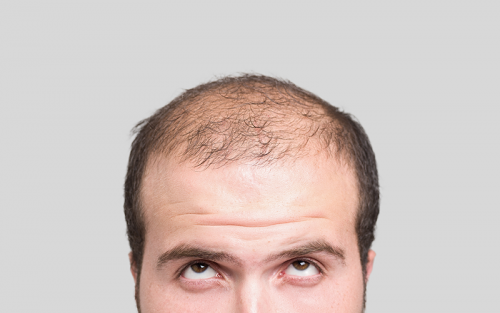Hair loss affects some 50 million men and 30 million women in the U.S. Nearly 40% of all women are affected by some form of hair loss by the age of 70, and half of men are affected by the age of 50.
In addition to all of the traditional treatment options for hair loss — from prescription medications to surgery — platelet-rich plasma (PRP) therapy is gaining popularity as a relatively new non-surgical treatment for hair loss in both men and women.
With relatively no side effects — and by using your body’s own platelets — PRP has been scientifically certified for aesthetic hair applications and offers a creative way to restore and stimulate hair growth.
What is PRP therapy?
Platelet-rich plasma therapy has been around for quite some time in dermatological circles. The therapy has been used for skin rejuvenation and surgical wound care for many years and employs patients’ own blood to improve the appearance of facial tissue.
The process is simpler than it might sound. A small amount of blood is drawn and then spun in a centrifuge to separate the platelets and plasma from the other blood components.
These isolated platelets pack a very powerful punch. They secrete more than 300 substances and include all kinds of powerful molecules and growth factors such as platelet-derived growth factor (PDGF), transforming growth factor (TGF), vascular endothelial growth factor (VEGF), insulin-like growth factor (IGF) and epidermal growth factor (EGF).
Platelet-rich plasma therapy has been used by doctors for all kinds of purposes, from coagulation and immune cell recruitment to promoting wound healing and helping to stimulate cell growth. Most commonly, platelets are injected into targeted areas of the face to remove wrinkles and fine lines, giving skin a more youthful appearance.
Today, research has shown that the growth factors found in platelets also include many substances to help repair cells, stimulate hair growth and slow down androgenic alopecia (male pattern baldness) in both men and women.
Just as PRP can be injected into the face, these platelet-derived growth factors can be applied to the scalp through injection or combined with microneedling for maximum results.
Are PRP Injections Better with Microneedling?
Microneedling, or collagen induction therapy (CIT), is a minimally invasive procedure that pokes tiny holes in the skin’s surface, creating a “micro injury.” The skin then responds to this injury by stimulating collagen production, plumping the skin and filling in wrinkles and fine lines.
When used to stimulate hair growth, the platelet-rich plasma is injected directly into the scalp. It can also be first applied topically to the scalp and then driven deeper into the scalp through microneedling.
For many patients, a combination of injecting the platelet-rich plasma directly into the scalp, followed by microneedling, provides the very best results.
Does PRP Therapy Really Work?
Platelet-rich plasma therapy for hair loss is relatively new, but early results have been very promising.
A recent dermatological study of 50 patients with male pattern baldness found that microneedling with platelet-rich plasma is a safe, effective and promising tool to treat both male and female hair loss.
The study, conducted by the Department of Dermatology at NHL Municipal Medical College in Gujarat, India, randomly divided the 50 subjects into two groups of 25. The first group was given topical minoxidil (commonly known as Rogaine) alone, while the second received topical minoxidil plus microneedling with platelet-rich plasma. At the end of six months, there was a significant improvement in the second group’s results.
The use of PRP injections in patients with androgenic alopecia has been shown to promote hair regrowth, decrease hair loss and increase the thickness of the hair.
Patients typically visit the dermatologist to inject the platelet-rich plasma into the scalp once a month for three consecutive months, then twice per year afterward as part of their maintenance program. Improvement in hair regrowth typically begins immediately after the procedure and continues for several months.
Side effects are minimal, with some swelling and redness at the injection site immediately after the procedure, and results can last for one year or longer.
Interested in Platelet-Rich Plasma (PRP) Therapy?
To learn more about this breakthrough therapy and how platelet-rich plasma therapy might be a good choice for you, contact our doctors at U.S. Dermatology Partners today. We have multiple locations throughout the country, so fill out our simple online form to get in touch with us. One of our local team members will reach out to you shortly to answer your questions or schedule an appointment for you to visit us soon.
Find a location near me
or

